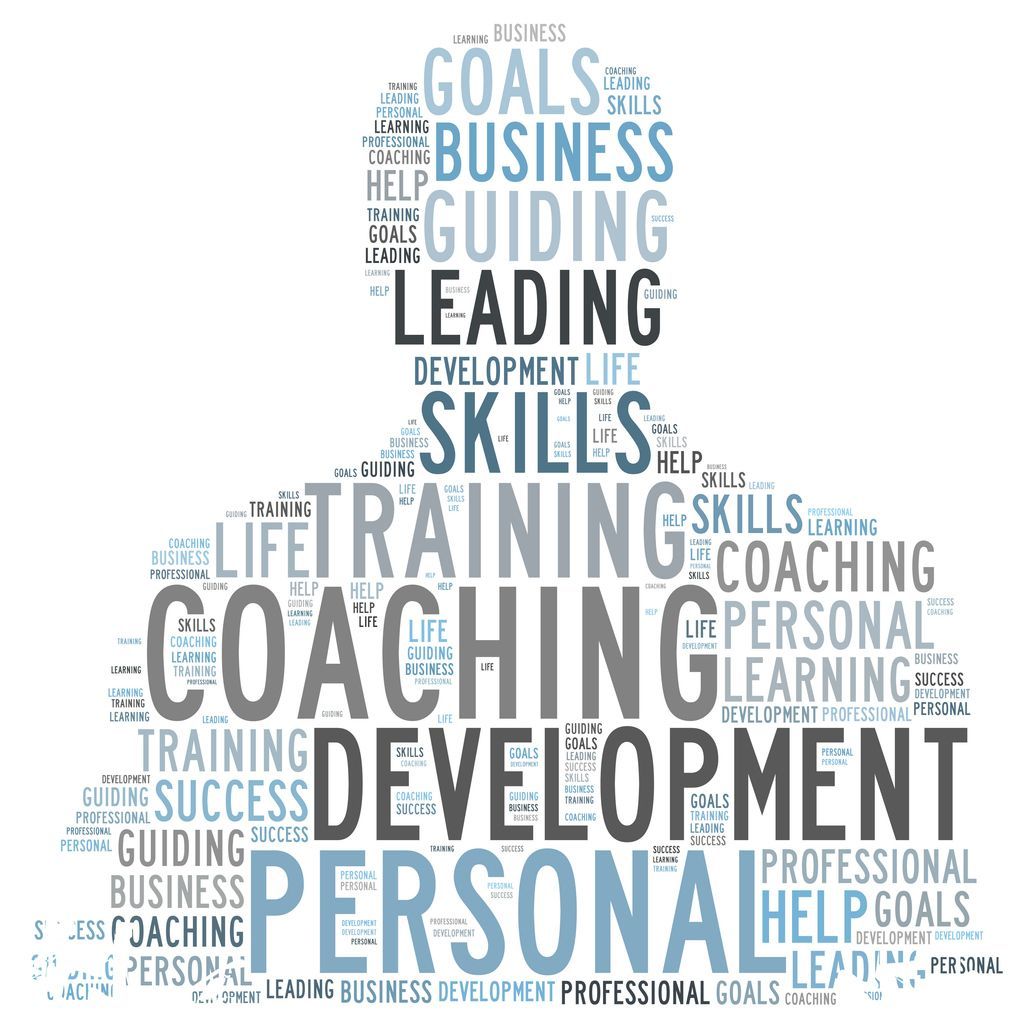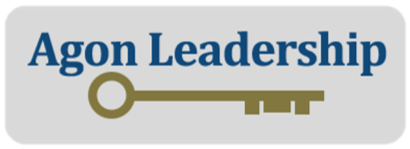BLOG
Blog

By Cathie Leimbach
•
26 Mar, 2024
There is a lot of evidence that the biggest potential for growing your organization’s top line, bottom line, or mission impact this year is through leadership development! Lack of strong leadership skills and behaviors impacts the bottom line. “For every year a company delays leadership development, it costs 7% of their annual sales.” - Blanchard – “Making the Business Case” Report Lack of strong leadership skills and behaviors impacts retention. “1 in 2 people state that they’ve left a job at some point to get away from a bad manager.” - Gallup Lack of strong leadership skills and behaviors impacts engagement and productivity. “Managers control 70% of the factors that impact employee engagement.” - Gallup In 2024, for the first time, managers and supervisors are more disengaged than frontline workers. - Gallup “There aren’t a lot of tools that promote leadership development.” - Bravely The need for leadership development has never been greater. With few people applying to your job postings, you don’t want a right-fit hire to become disenchanted and leave in 3 to 6 months. Managers of remote workers have to be more intentional about communicating with their employees because they can’t touch base in the break room or drop in as they are walking past their office. Today’s employees want a positive workplace culture but 90% of leaders aren’t focusing on building rapport, increasing engagement, and providing the various types of support team members need to become high performers. Yet, there is very good news in the leadership development space! Culture Impact has developed a stellar management training course which helps leaders: realize the need for trusting and inspiring employees, learn about effective leadership practices, develop the foundational skills for engaging and empowering team members, and build confidence to regularly use these effective leadership practices to support employee and organizational success. If you have been losing sleep at night, or pulling your hair out, over low employee morale and productivity, it will be well worth your time to investigate the highly effective Conversational Management training. Click here for more information and to register for a 2-hour interactive workshop experience. Attending a remote Test Run of this highly effective leadership development program could transform your work and personal life – and the workplace reality for everyone on your team! When you decide to offer Conversational Management to your people leaders, the training can be delivered in-person or via Zoom. I look forward to seeing you at one of the upcoming Test Drives! Register Now! Please reach out with any and all questions about leadership development or Conversational Management. Contact Cathie Leimbach of Agon Leadership at 440-320-3113 or cathie@agonleadership.com .

By Cathie Leimbach
•
12 Mar, 2024
Empathy, often considered a soft skill, plays a pivotal role in fostering a positive and productive work environment. Yet, this ability to recognize, understand, and share the thoughts and feelings of another person, is often undervalued. In the workplace where deadlines and targets dominate, understanding and connecting with colleagues on a personal level may seem secondary. However, research and workplace dynamics suggest otherwise. Empathy is not just a natural trait but a skill that can be cultivated. Actively practicing empathy can enhance one’s ability to comprehend and share the feelings of others. In the workplace, this results in improved communication, collaboration, and a sense of belonging among team members. When employees feel a genuine connection with their colleagues and managers, the benefits extend far beyond the emotional realm. Increased empathy correlates with higher efficiency and productivity. Managers who invest time in understanding the personal lives of their team members create an environment where employees feel valued and supported which, in turn, leads to greater job satisfaction and a stronger sense of loyalty to the organization. In a fast-paced and competitive workplace, showing empathy might be the most efficient use of a manager’s time. Taking a moment to inquire about an employee’s well-being not only builds trust but also fosters a culture of mutual respect. Ultimately, a workplace rich with empathy becomes a breeding ground for creativity, innovation, and sustained success.

By Cathie Leimbach
•
05 Mar, 2024
When employees receive regular feedback on their performance, their productivity and morale, as well as the organization’s retention and bottom line, improve. Once leaders have set and communicated clear expectations and monitored employee progress and results, it is important to let them know how well they are performing. When you catch employees doing something right, tell them so they know which tasks they are doing correctly. Their stress level falls because they know they are on the right track. This gives them more confidence in their work. When you see that an employee is not meeting expectations, it is important to have a conversation with them, identify the bottleneck, and determine a corrective action. Employees may lack appropriate equipment and tools, not fully understand expectations, or need more training. Nobody likes negative feedback, so few people underperform intentionally. Many are afraid of being fired if they approach their manager to ask for help. Studies show that most employees are very thankful for negative feedback if it is followed by a plan to correct their performance, helping them be successful. So, it is important that leaders have the courage to address underperformance in a calm manner which helps the team member become a valued employee. The frequency of praise and corrective feedback varies with the employee’s competence and confidence. When an individual is new to a task, it is appropriate to provide feedback every few minutes initially, dropping back to hourly, and then daily. As people become more familiar with a task, positive and corrective feedback can become less frequent. However, to build and maintain an engaged and productive workforce, it is important that managers acknowledge even highly competent individuals at least weekly.

By Cathie Leimbach
•
27 Feb, 2024
Once you have shared expectations with a team member, it is important that you monitor their progress, compare their work with your expectations, and provide appropriate feedback. Depending on the individual’s development level and the nature of the task, the frequency and method of monitoring progress varies. During the initial stages of learning a task monitoring may take place every 5 minutes or hourly and move to daily. A highly skilled person may be asked to provide their manager with weekly or monthly progress reports. Before comparing an employee’s results or progress-to-date with your expectations, it is important to review the written description of your expectations. We often don’t tell others or put in writing exactly what we were thinking when we assigned the task. If the individual’s progress is not in line with the written expectations you provided, then providing guidance for them to make changes is appropriate. However, if the work they are doing is in line with written expectations but not in line with what you really wanted, it is important that you acknowledge having left out key elements of your written expectations and revise them promptly. The third part of monitoring employee progress is to communicate successes and areas for improvement. Provide specific positive feedback on parts of the task your team member is doing well. Communicate areas for improvement in a calm manner. Discuss how they can improve their work towards meeting your expectations. Your role as a leader is to support employees for success. This requires that you monitor their progress, compare progress to stated expectations, and provide both positive feedback and corrective action that helps them become high performers.

By Cathie Leimbach
•
20 Feb, 2024
Effectively communicating workplace expectations involves providing specific details about the desired outcomes and setting clear deadlines. For instance, if a marketing team is tasked with launching a new product campaign, expectations could include developing a comprehensive marketing strategy, creating engaging content for various platforms, and achieving a specific target for website traffic or sales conversions. To illustrate, one expectation might be to increase website traffic by 20% within the first month of the campaign launch. This expectation is clear, measurable, and aligns with the overall goal of the project. Additionally, specifying a deadline, such as achieving this milestone by the end of the first quarter, provides a tangible timeframe for team members to work towards. Similarly, if the software development team is working on a new app release, expectations could include delivering a bug-free product with specific features. Deadlines could be set for the completion of coding, then of testing, and finally, ensuring the app is ready for launch by a particular date, such as the end of the fiscal year. By providing concrete expectations and deadlines, employees gain a clear understanding of what is required of them and when it needs to be accomplished. This clarity fosters accountability, enables effective planning, and ultimately leads to successful project outcomes.

By Cathie Leimbach
•
13 Feb, 2024
Curiosity is often dubbed the engine of intellectual growth. It is the key to many benefits that extend far beyond gaining more knowledge. It is a catalyst for personal and professional development, broadening one’s horizons, and strengthening relationships. At its core, curiosity sharpens thinking skills. By questioning the status quo and seeking answers, individuals develop critical thinking and problem-solving abilities. This drive to understand sparks innovative activity, enabling individuals to tackle challenges with ingenuity and resilience. Also, curiosity is a gateway to knowledge. It propels individuals on a continuous journey of exploration and learning, fostering a deeper understanding of the world around us. From uncovering new interests to mastering new skills, curiosity fuels intellectual growth and empowers individuals to adapt to an ever-changing landscape. Beyond personal enrichment, curiosity also plays a pivotal role in nurturing meaningful relationships. Genuine curiosity about others fosters empathy, understanding, and connection. By actively listening, asking insightful questions, and showing genuine interest, individuals build rapport and forge stronger bonds with peers, colleagues, and loved ones. In essence, curiosity isn’t merely a trait; it’s a way of life – an ongoing pursuit of understanding and growth. Embracing curiosity opens doors to new possibilities, enriches experiences, and cultivates a more vibrant and fulfilling existence. So, dare to ask questions, explore the unknown, and let curiosity guide you on a journey of discovery and transformation. What are you curious about? How can you reach out to explore new possibilities in this area of interest?

By Cathie Leimbach
•
06 Feb, 2024
Employee engagement is the cornerstone of a thriving workplace, and managers play a pivotal role in nurturing it. By recognizing and leveraging team members’ strengths, managers can create a more engaged workforce. Understanding each individual’s unique talents allows managers to tailor tasks, provide opportunities for growth, and foster a culture of appreciation. Firstly, it is important for managers to conduct regular assessments to identify team members’ strengths and areas for development. These insights enable personalized goal setting and task allocation, ensuring employees feel valued and motivated. Also, offering training and development programs which leverage individuals’ strengths increases employee effectiveness, cultivates a sense of accomplishment, and boosts morale. Additionally, providing constructive feedback and appreciation reinforces positive behaviors and encourages continuous improvement. Acknowledging employees’ contributions publicly fosters a supportive environment where individuals feel empowered to excel. Also, fostering collaboration allows team members to leverage each other’s strengths, promoting synergy and innovation. By harnessing the strengths of their team members, managers can foster a highly engaged workforce that is motivated, productive, and committed to achieving organizational goals. This proactive approach not only benefits individual employees but also contributes to the overall success and sustainability of the organization.

By Cathie Leimbach
•
26 Mar, 2024
There is a lot of evidence that the biggest potential for growing your organization’s top line, bottom line, or mission impact this year is through leadership development! Lack of strong leadership skills and behaviors impacts the bottom line. “For every year a company delays leadership development, it costs 7% of their annual sales.” - Blanchard – “Making the Business Case” Report Lack of strong leadership skills and behaviors impacts retention. “1 in 2 people state that they’ve left a job at some point to get away from a bad manager.” - Gallup Lack of strong leadership skills and behaviors impacts engagement and productivity. “Managers control 70% of the factors that impact employee engagement.” - Gallup In 2024, for the first time, managers and supervisors are more disengaged than frontline workers. - Gallup “There aren’t a lot of tools that promote leadership development.” - Bravely The need for leadership development has never been greater. With few people applying to your job postings, you don’t want a right-fit hire to become disenchanted and leave in 3 to 6 months. Managers of remote workers have to be more intentional about communicating with their employees because they can’t touch base in the break room or drop in as they are walking past their office. Today’s employees want a positive workplace culture but 90% of leaders aren’t focusing on building rapport, increasing engagement, and providing the various types of support team members need to become high performers. Yet, there is very good news in the leadership development space! Culture Impact has developed a stellar management training course which helps leaders: realize the need for trusting and inspiring employees, learn about effective leadership practices, develop the foundational skills for engaging and empowering team members, and build confidence to regularly use these effective leadership practices to support employee and organizational success. If you have been losing sleep at night, or pulling your hair out, over low employee morale and productivity, it will be well worth your time to investigate the highly effective Conversational Management training. Click here for more information and to register for a 2-hour interactive workshop experience. Attending a remote Test Run of this highly effective leadership development program could transform your work and personal life – and the workplace reality for everyone on your team! When you decide to offer Conversational Management to your people leaders, the training can be delivered in-person or via Zoom. I look forward to seeing you at one of the upcoming Test Drives! Register Now! Please reach out with any and all questions about leadership development or Conversational Management. Contact Cathie Leimbach of Agon Leadership at 440-320-3113 or cathie@agonleadership.com .

By Cathie Leimbach
•
12 Mar, 2024
Empathy, often considered a soft skill, plays a pivotal role in fostering a positive and productive work environment. Yet, this ability to recognize, understand, and share the thoughts and feelings of another person, is often undervalued. In the workplace where deadlines and targets dominate, understanding and connecting with colleagues on a personal level may seem secondary. However, research and workplace dynamics suggest otherwise. Empathy is not just a natural trait but a skill that can be cultivated. Actively practicing empathy can enhance one’s ability to comprehend and share the feelings of others. In the workplace, this results in improved communication, collaboration, and a sense of belonging among team members. When employees feel a genuine connection with their colleagues and managers, the benefits extend far beyond the emotional realm. Increased empathy correlates with higher efficiency and productivity. Managers who invest time in understanding the personal lives of their team members create an environment where employees feel valued and supported which, in turn, leads to greater job satisfaction and a stronger sense of loyalty to the organization. In a fast-paced and competitive workplace, showing empathy might be the most efficient use of a manager’s time. Taking a moment to inquire about an employee’s well-being not only builds trust but also fosters a culture of mutual respect. Ultimately, a workplace rich with empathy becomes a breeding ground for creativity, innovation, and sustained success.

By Cathie Leimbach
•
05 Mar, 2024
When employees receive regular feedback on their performance, their productivity and morale, as well as the organization’s retention and bottom line, improve. Once leaders have set and communicated clear expectations and monitored employee progress and results, it is important to let them know how well they are performing. When you catch employees doing something right, tell them so they know which tasks they are doing correctly. Their stress level falls because they know they are on the right track. This gives them more confidence in their work. When you see that an employee is not meeting expectations, it is important to have a conversation with them, identify the bottleneck, and determine a corrective action. Employees may lack appropriate equipment and tools, not fully understand expectations, or need more training. Nobody likes negative feedback, so few people underperform intentionally. Many are afraid of being fired if they approach their manager to ask for help. Studies show that most employees are very thankful for negative feedback if it is followed by a plan to correct their performance, helping them be successful. So, it is important that leaders have the courage to address underperformance in a calm manner which helps the team member become a valued employee. The frequency of praise and corrective feedback varies with the employee’s competence and confidence. When an individual is new to a task, it is appropriate to provide feedback every few minutes initially, dropping back to hourly, and then daily. As people become more familiar with a task, positive and corrective feedback can become less frequent. However, to build and maintain an engaged and productive workforce, it is important that managers acknowledge even highly competent individuals at least weekly.

By Cathie Leimbach
•
27 Feb, 2024
Once you have shared expectations with a team member, it is important that you monitor their progress, compare their work with your expectations, and provide appropriate feedback. Depending on the individual’s development level and the nature of the task, the frequency and method of monitoring progress varies. During the initial stages of learning a task monitoring may take place every 5 minutes or hourly and move to daily. A highly skilled person may be asked to provide their manager with weekly or monthly progress reports. Before comparing an employee’s results or progress-to-date with your expectations, it is important to review the written description of your expectations. We often don’t tell others or put in writing exactly what we were thinking when we assigned the task. If the individual’s progress is not in line with the written expectations you provided, then providing guidance for them to make changes is appropriate. However, if the work they are doing is in line with written expectations but not in line with what you really wanted, it is important that you acknowledge having left out key elements of your written expectations and revise them promptly. The third part of monitoring employee progress is to communicate successes and areas for improvement. Provide specific positive feedback on parts of the task your team member is doing well. Communicate areas for improvement in a calm manner. Discuss how they can improve their work towards meeting your expectations. Your role as a leader is to support employees for success. This requires that you monitor their progress, compare progress to stated expectations, and provide both positive feedback and corrective action that helps them become high performers.

By Cathie Leimbach
•
20 Feb, 2024
Effectively communicating workplace expectations involves providing specific details about the desired outcomes and setting clear deadlines. For instance, if a marketing team is tasked with launching a new product campaign, expectations could include developing a comprehensive marketing strategy, creating engaging content for various platforms, and achieving a specific target for website traffic or sales conversions. To illustrate, one expectation might be to increase website traffic by 20% within the first month of the campaign launch. This expectation is clear, measurable, and aligns with the overall goal of the project. Additionally, specifying a deadline, such as achieving this milestone by the end of the first quarter, provides a tangible timeframe for team members to work towards. Similarly, if the software development team is working on a new app release, expectations could include delivering a bug-free product with specific features. Deadlines could be set for the completion of coding, then of testing, and finally, ensuring the app is ready for launch by a particular date, such as the end of the fiscal year. By providing concrete expectations and deadlines, employees gain a clear understanding of what is required of them and when it needs to be accomplished. This clarity fosters accountability, enables effective planning, and ultimately leads to successful project outcomes.

By Cathie Leimbach
•
13 Feb, 2024
Curiosity is often dubbed the engine of intellectual growth. It is the key to many benefits that extend far beyond gaining more knowledge. It is a catalyst for personal and professional development, broadening one’s horizons, and strengthening relationships. At its core, curiosity sharpens thinking skills. By questioning the status quo and seeking answers, individuals develop critical thinking and problem-solving abilities. This drive to understand sparks innovative activity, enabling individuals to tackle challenges with ingenuity and resilience. Also, curiosity is a gateway to knowledge. It propels individuals on a continuous journey of exploration and learning, fostering a deeper understanding of the world around us. From uncovering new interests to mastering new skills, curiosity fuels intellectual growth and empowers individuals to adapt to an ever-changing landscape. Beyond personal enrichment, curiosity also plays a pivotal role in nurturing meaningful relationships. Genuine curiosity about others fosters empathy, understanding, and connection. By actively listening, asking insightful questions, and showing genuine interest, individuals build rapport and forge stronger bonds with peers, colleagues, and loved ones. In essence, curiosity isn’t merely a trait; it’s a way of life – an ongoing pursuit of understanding and growth. Embracing curiosity opens doors to new possibilities, enriches experiences, and cultivates a more vibrant and fulfilling existence. So, dare to ask questions, explore the unknown, and let curiosity guide you on a journey of discovery and transformation. What are you curious about? How can you reach out to explore new possibilities in this area of interest?

By Cathie Leimbach
•
06 Feb, 2024
Employee engagement is the cornerstone of a thriving workplace, and managers play a pivotal role in nurturing it. By recognizing and leveraging team members’ strengths, managers can create a more engaged workforce. Understanding each individual’s unique talents allows managers to tailor tasks, provide opportunities for growth, and foster a culture of appreciation. Firstly, it is important for managers to conduct regular assessments to identify team members’ strengths and areas for development. These insights enable personalized goal setting and task allocation, ensuring employees feel valued and motivated. Also, offering training and development programs which leverage individuals’ strengths increases employee effectiveness, cultivates a sense of accomplishment, and boosts morale. Additionally, providing constructive feedback and appreciation reinforces positive behaviors and encourages continuous improvement. Acknowledging employees’ contributions publicly fosters a supportive environment where individuals feel empowered to excel. Also, fostering collaboration allows team members to leverage each other’s strengths, promoting synergy and innovation. By harnessing the strengths of their team members, managers can foster a highly engaged workforce that is motivated, productive, and committed to achieving organizational goals. This proactive approach not only benefits individual employees but also contributes to the overall success and sustainability of the organization.



